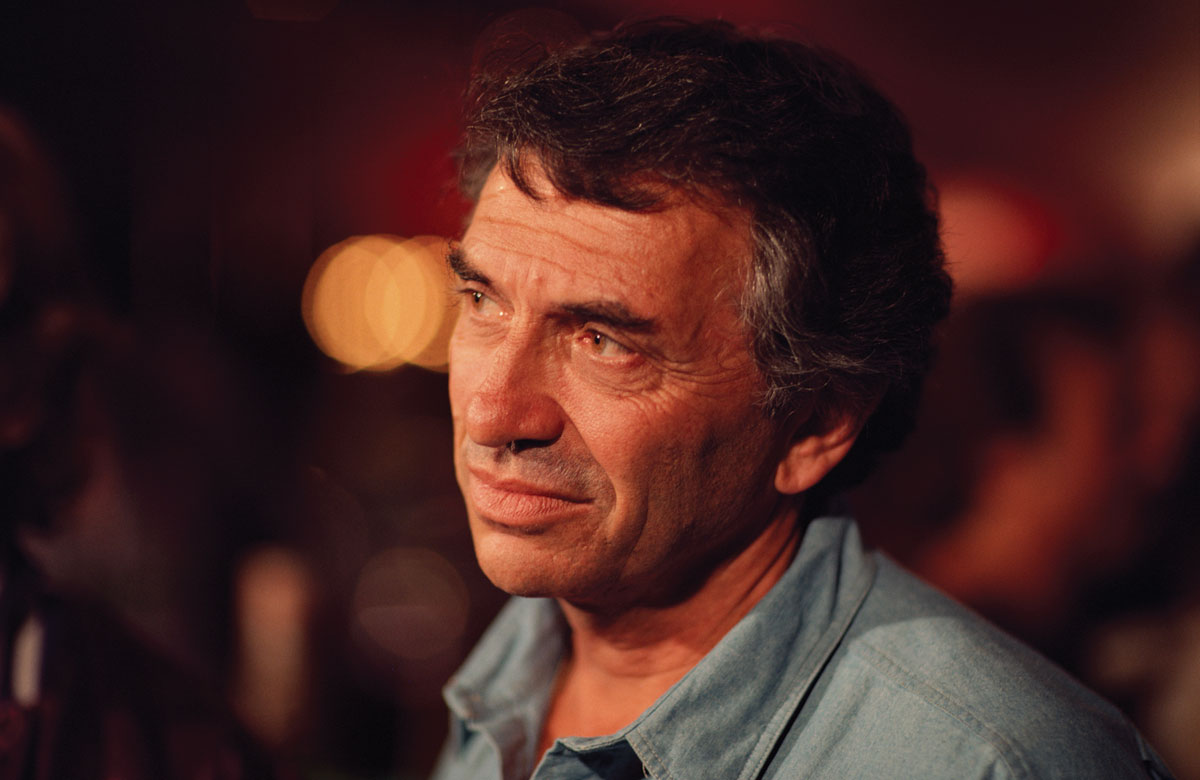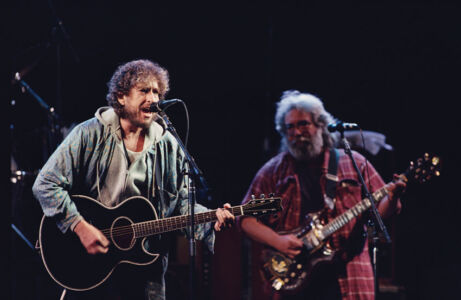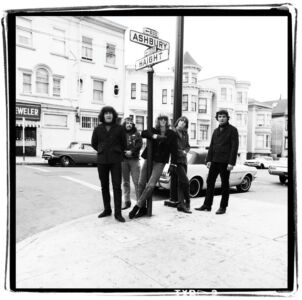BILL GRAHAM
Ken Friedman, Bill Graham between takes during the filming of “A ’60s Reunion with Bill Graham: A Night at the Fillmore” Fillmore Auditorium, San Francisco, 1986 Chromogenic color print, frame: 18 1/8 x 25 1/8 in. Courtesy of Ken Friedman. Bill Graham and the Rock & Roll Revolution is organized and circulated by the Skirball Cultural Center, Los Angeles, California. On view March 17–July 5, 2016 at The Contemporary Jewish Museum, San Francisco.
When Wolodia Wolfgang Grajonca, born of Russian Jews who immigrated to Germany followed by France, left Paris to escape the Nazi horde entering Paris in 1940 it was the beginning of a life only Shakespeare could recount. It was a life of myths, overarching successes and tragedy. Even the truths could evolve into myths as Graham turned the nascent world of rock and roll on its ear, writes our travel and lifestyle editor Al Auger. (#Lifestyle, #Music, #Siliconeer, @Siliconeer, #BillGraham, #RockandRoll, #NelsonMandela)
“Bill Graham howled. He Talked. He shouted. He laughed. He threatened. He barked. He sang (a little)…[He drew] us into his evolving world of rock show-business revolution, with the authority of a leading Boy Scout: bossy and generous at once.” – Pete Townshend, Lead guitarist of “The Who”
Part 1
Through July 5, the Contemporary Jewish Museum in San Francisco is presenting “Bill Graham and the Rock and roll Revolution,” an impressive showcase of this brilliant mind encased in anger and generosity born in a 12-year-old’s tortured beginning, an actor’s ability to read situations and react and a dancer’s mutability. This retrospective is reminiscent of the grand exposition the museum presented on the life of Gertrude Stein and Alice B. Toklas (see Siliconeer, Oct., 2011).
The marquee of the principals in anchoring the retrospective promoter’s idea read like a list of not only former leaders of Graham’s production company, Bill Graham Presents (BGP), but a group of his family, closest friends and associates. Former vice-presidents Danny Scher and Bob Barsotti were with BGP at, or near the beginning; Bonnie Simmons, a long-time employee, has added much of the makeup of the retrospective; and dear to my memories are Graham’s two sons, David and Alex. I remember playing with the two young siblings, at Graham’s magical home, Masada, in Marin County.
There is so much to see and absorb at this monumental memorial, space here simply doesn’t allow for the association my relationship and the stories behind the hundreds of artifacts, items, photos, audio and videos of Graham’s life and influence to parse (see Part 2 next month). So lets begin with an unhurried stroll through the many rooms that will offer you a kaleidoscope of adventures, misadventures and insight into this human conundrum.
When you enter there will be a warm welcome from the sounds of The Grateful Dead, Otis Redding or Janis Joplin and many more to whom Graham gave their start or acceleration on the road to rock success. The walls are filled with photographs of many of the hundreds of concerts wearing the BGP brand. How many of us remember Winterland, Day(s) on the Green or the strange coupling of Miles Davis opening for the Grateful Dead at the Fillmore. To truly venerate this man, his early life is documented with photos as far back to his youth in Europe.
Musical instruments displayed include shards of the Fender Stratocaster guitar famously smashed by Jimi Hendrix at London’s Royal Albert Hall. The 1968 Gibson SG Special guitar Pete Townshend played at the Metropolitan Opera House performance of the rock opera Tommy then threw it to a fan in the audience. A Santana guitar displayed and Janis Joplin’s tambourine, and talks with the many BGP people involved, screenings of short videos of rock and roll then and now.
Deeper and deeper are the copious audio and video displays that chronicle Graham’s family and his youth, in particular by films by his childhood friend Ralph Moratz. A host of videos and audios follow Graham as he begins a new life in New York and his subsequent move to San Francisco. Consider, too, the extensive list of gallery chats with academics, performers many close friends such as Wavy Gravy. These performances go on throughout the run of the retrospective; see the sidebar for information on the schedule and Website.
The life of Bill Graham was one that will be remembered, memorialized and talked about for millenniums to come. He was a giant who reached for the stars and collected them. Bill Graham was so much more than promoter of music that circled the world. A man of charity and compassion, deeply religious, a war hero with a Bronze Star, mercurial and fickle. If you were a friend or employee, he always had your back.
Before you leave stop by the intimate portrait of Bill and Melissa Gold; the love between these two is palpable. That love was violently ended on October 25, 1991 as the trio of Graham, Melissa and his personal pilot and long-time friend, Steve Kahn leaving a concert in Concord aboard his private helicopter. Trapped in thick fog and flying too low over Vallejo the helicopter crashed into a high-voltage tower bursting into flames. The charred remains, according to Wikipedia, “hung grotesquely in the tower for more than a day.”
I knew both Bill Graham and Melissa; Bill is everything this monster presentation offers of such a rare person. Melissa was also a rare and a completely guileless human being who everyone loved, no less than myself. Only Shakespeare could give this existence, this story, its due. In his absence, Bill Graham and the Rock & Roll Revolution at the Contemporary Jewish Museum adroitly and dramatically bring this imposing legend to life.
MENUTIA
MUSEUM HOURS: Daily 11am–5pm, Thursdays 11am–8pm, Closed Wednesdays
ADMISSION: Adults, $12; Seniors, $10; Students, (w/valid ID) $10; Under 18-years, free; Members, free; Thursday (after 5 pm), $5. First Tuesday of month, Free; Discount for groups of 10 or more.
TOURS: Offered every day as part of Museum admission.
Contemporary Jewish Museum
736 Mission Street (Between 3rd and 4th Streets)
San Francisco, CA 94103
Tel: (415) 655-7800 • email: Info@thecjm.org
Web: www.thecjm.org











